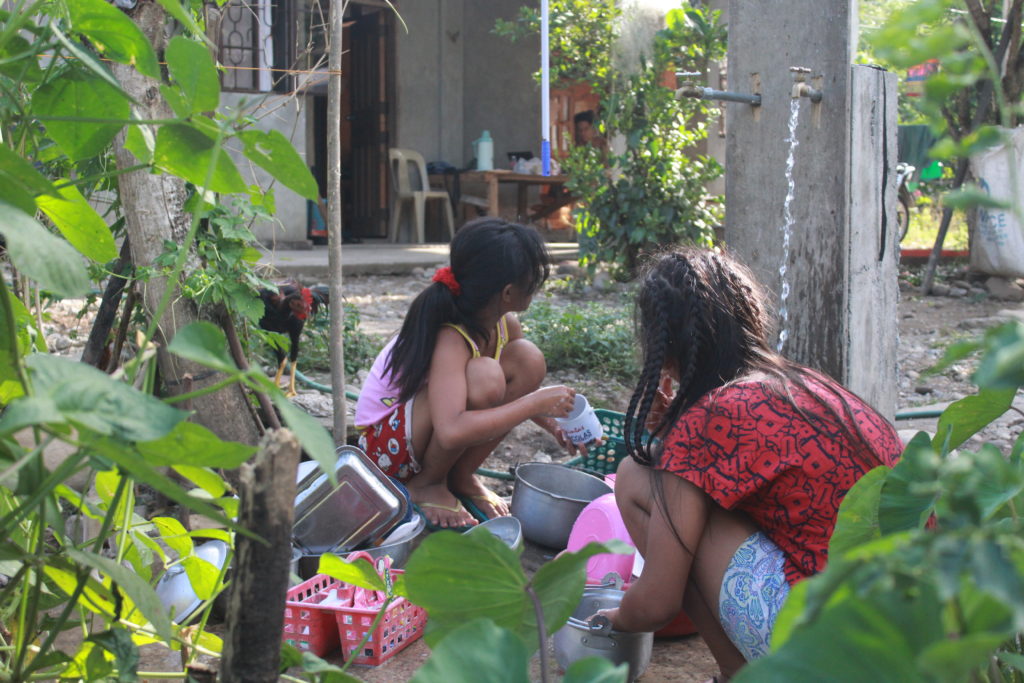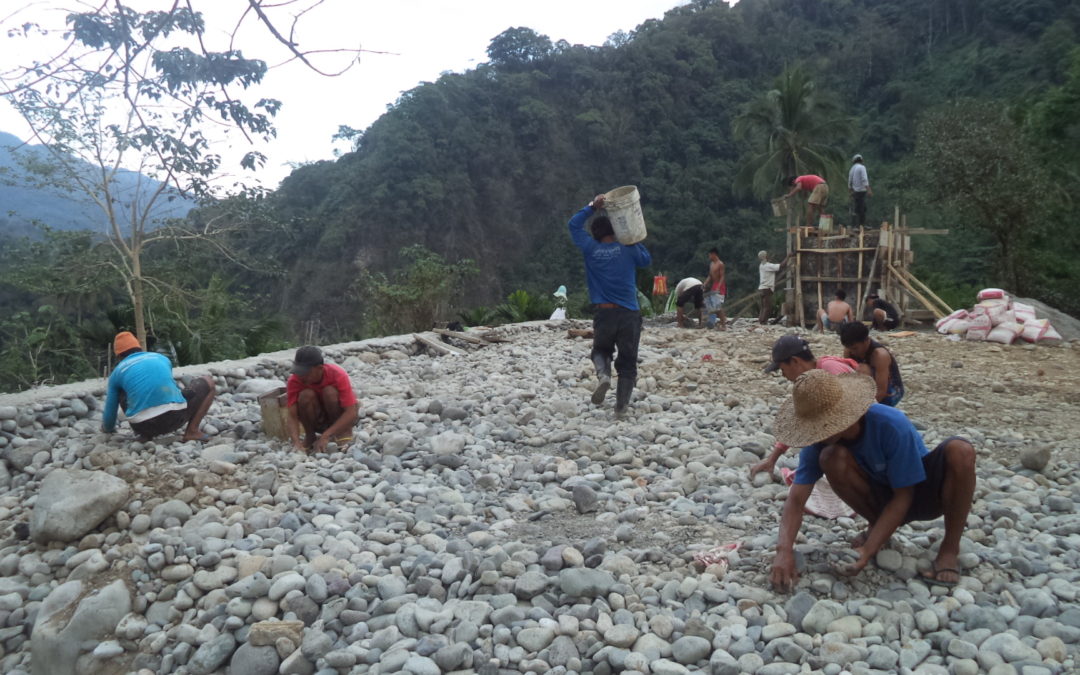Sitio Mosimos and its water problem
Sitio Mosimos is the most populated sitio in Barangay Dupag, Tabuk, Kalinga. It is also a long way from the city where most of the commercial activities are taking place. This causes the people of Mosimos to rely on agricultural farming as their main source of livelihood with coffee, mung beans and rice as main crops being produced all through-out the year. Some people in the community also takes advantage of the location of the sitio, which is along the Kalinga – Mountain Province National Road, by putting up small stores and businesses which serves commuters and travelers travelling through the area. Income derived from these livelihood activities is only enough for everyday sustenance thus having extra income is a luxury to most people. Surplus income is accessible only to few villagers working white collar jobs.
Although Mosimos is beside the Chico River, access to potable water was and still is a problem in the community. There have been efforts by the Barangay Local Government Unit (BLGU) and Non-Government Organisations to provide clean water to the community. In the early 1990’s, Cordillera Disaster Response and Development Services (CorDisRDS Inc.) – then known as Montañosa Relief and Rehabilitation Foundation Services Inc. or MRRS, Inc – helped facilitate the construction of a waterworks project for Tomiangan, a sitio neighboring Mosimos in Barangay Dupag. This waterworks project also served the households of Mosimos but natural disasters and wear and tear slowly destroyed the pipelines causing it to be repaired. The BLGU of Barangay Dupag also funded the construction of a waterworks for Mosimos in 2014 and another waterworks system was constructed in 2018 to provide water to the newly constructed high school building in the community. A total of three waterworks systems have been constructed in Mosimos but these water systems have been contaminated by limescale causing the water to be not safe to drink. The volume of water coming out of these water systems have also decreased through the years due to climate change affecting the springs where these water systems are tapped from. Residents who has vehicles would even go to the other sitios to fetch for safer water which takes at least 30 minutes of their time. Unfortunately, those who does not have access to motor vehicles had no other choice but to use water with limescale.
Opportunity for water
On September of 2018 the whole of Cordillera was devastated when Typhoon Ompong (known internationally as Mangkhut) struck the Philippines. Mosimos was not exempted from the destruction of the typhoon. The disaster had worsened the quality of life of the community especially when their crops died due to the typhoon. Additionally the bad condition of Water, sanitation and hygiene (WASH) also worsened due to the typhoon. Water supply had been cut off for weeks and the community realized the need for a steady source of water. An opportunity to gain access to clean water had presented itself when CorDisRDS together with its national partner Citizens Disaster Response Center (CDRC) initiated a project that would bring clean water to Mosimos. The project named “Restoring the Livelihoods of those most affected by Tropical Storms in Luzon” aims to help communities struck by typhoon Ompong by providing support for livelihood and community owned assets.
The project was consulted with the community’s People Organisation, Tomiangan for Unity Progress and Action (Tupac), as inhabitants of Mosimos are members of the said Organisation. The community proposed that a waterworks system that will supply potable water to the village is to be constructed in Mosimos. Doubts on if the project would be implemented by the end of the project period were raised during the consultation. The lack of cooperation of the community, limited funds of the project and difficulty of implementing the proposed project are concerns that came out during community meetings. Eventually the community agreed to implement the project not only for their benefit but for their descendants as well.
There is unity in community

Children of Sitio Mosimos, Barangay Dupag, Kalinga, doing household chores using the newly constructed waterworks.
Building a waterworks system that would benefit a community of at least 50 people is not easy. But the community did a commendable job in implementing the project. The doubts and concerns that were raised during the consultation were non existent during the implementation. The limited finances leading to absence of funds for labor was not a problem as everyone from the village, including the women, would gladly work in the construction of the water works system. From the construction of the reservoir tank up to the fitting and installation of water pipes, the men worked tirelessly while the women provided support by cooking and bringing food to the working men. This also proved that there is strong cooperation within the community contrary to what was mentioned during the community meeting. The pipes from the water supply crossing above the river was deemed difficult during the planning of the project but the collective effort of the community was more than enough to accomplish such difficult tasks. Another feat that should not be shrugged off is the fact that the waterworks was completed during the COVID-19 pandemic. They were able to finish a fully functioning waterworks system despite the health crisis without setting aside the well being of the community. This demonstrates that unity can truly achieve great things.
The newly constructed resulted in positive things within the community. Aside from ease of access to potable water, the process of building the waterworks strengthened the solidarity of the villagers. The people are now happier not only because of the water but also because of the they have realized that they can do anything together.

